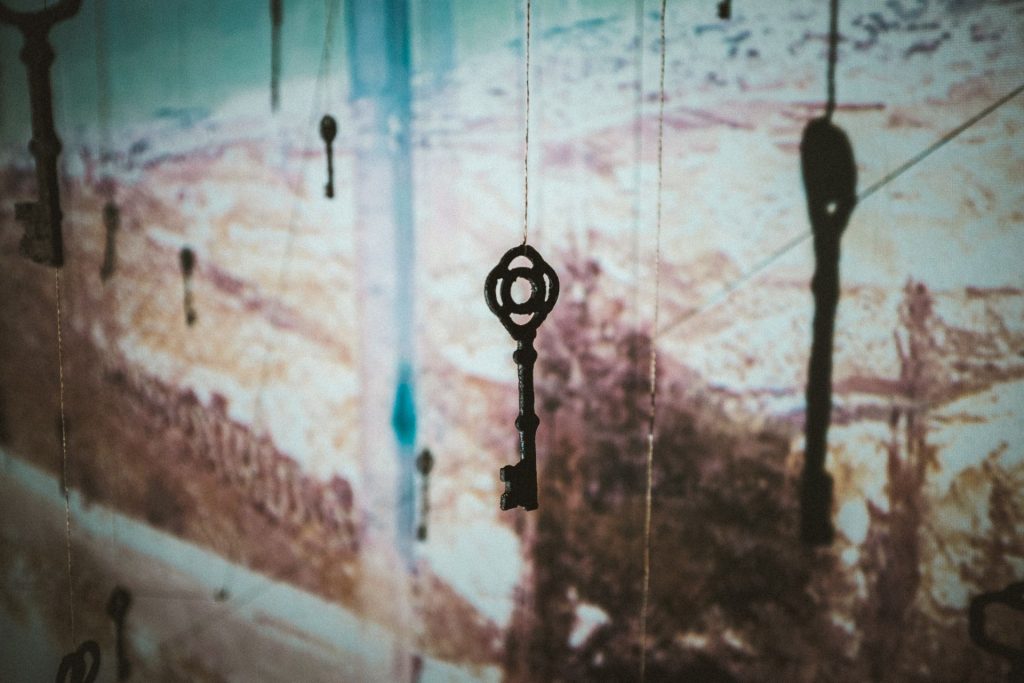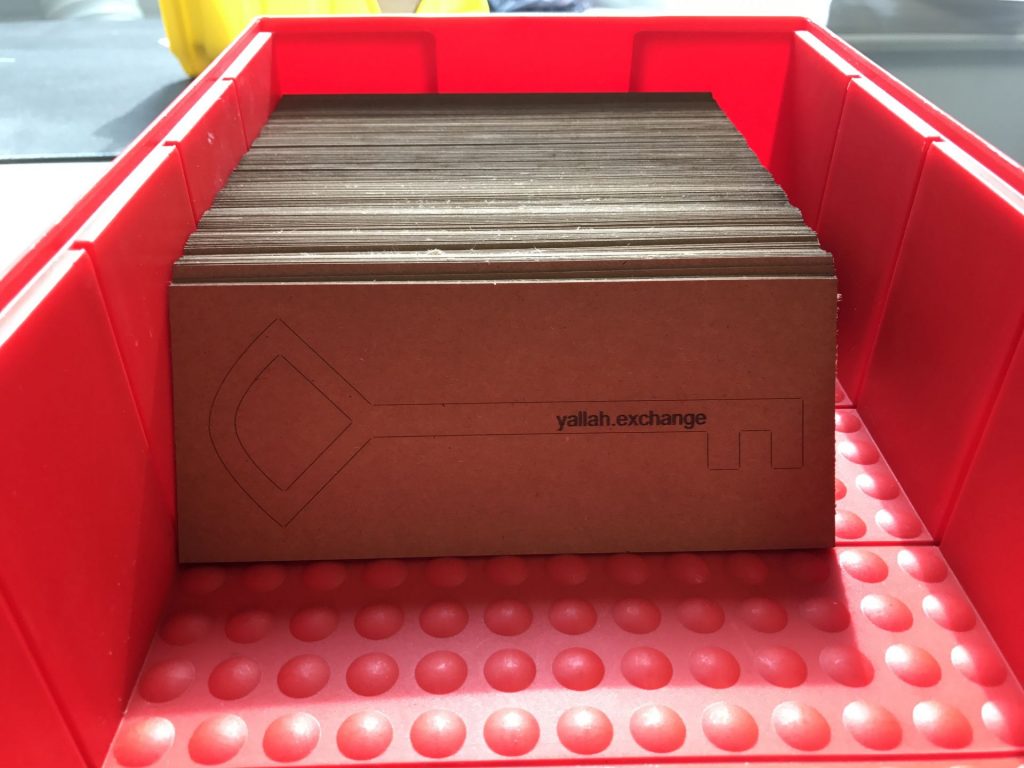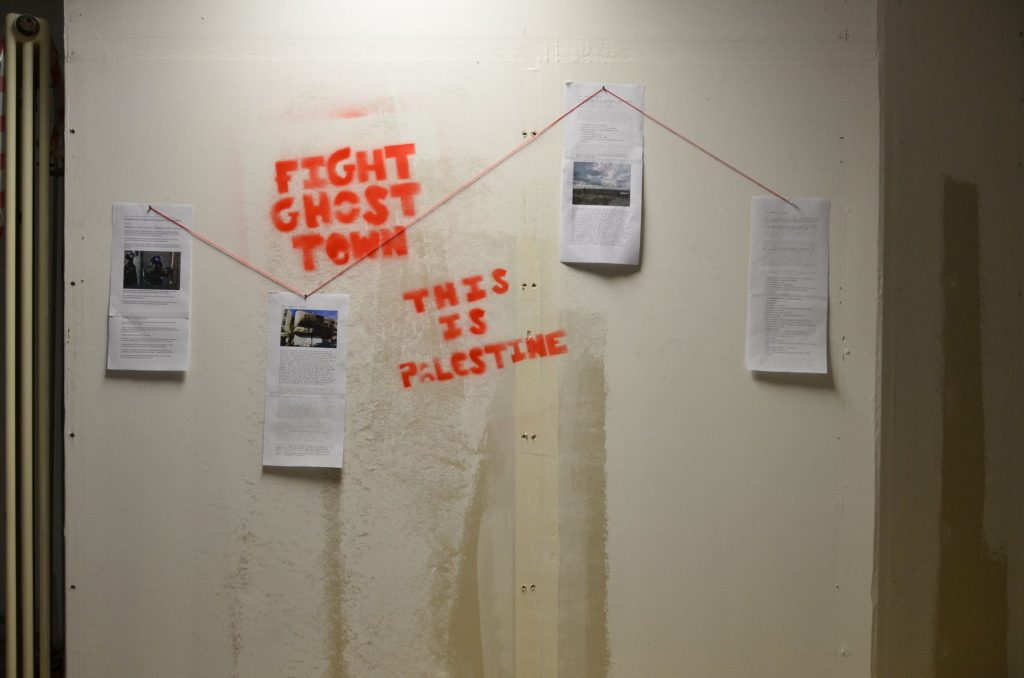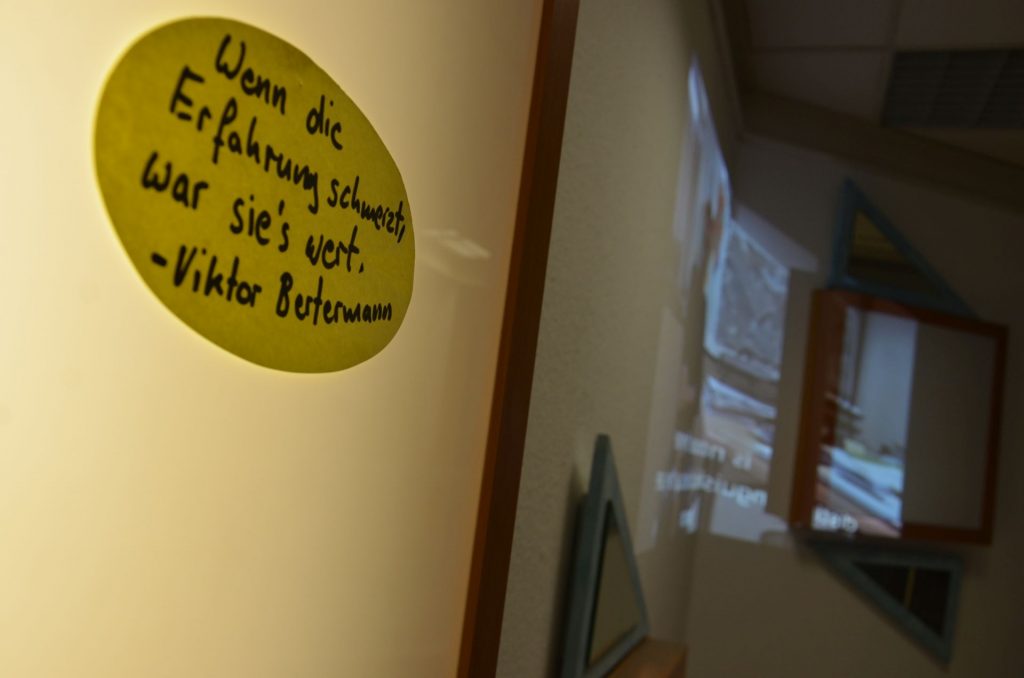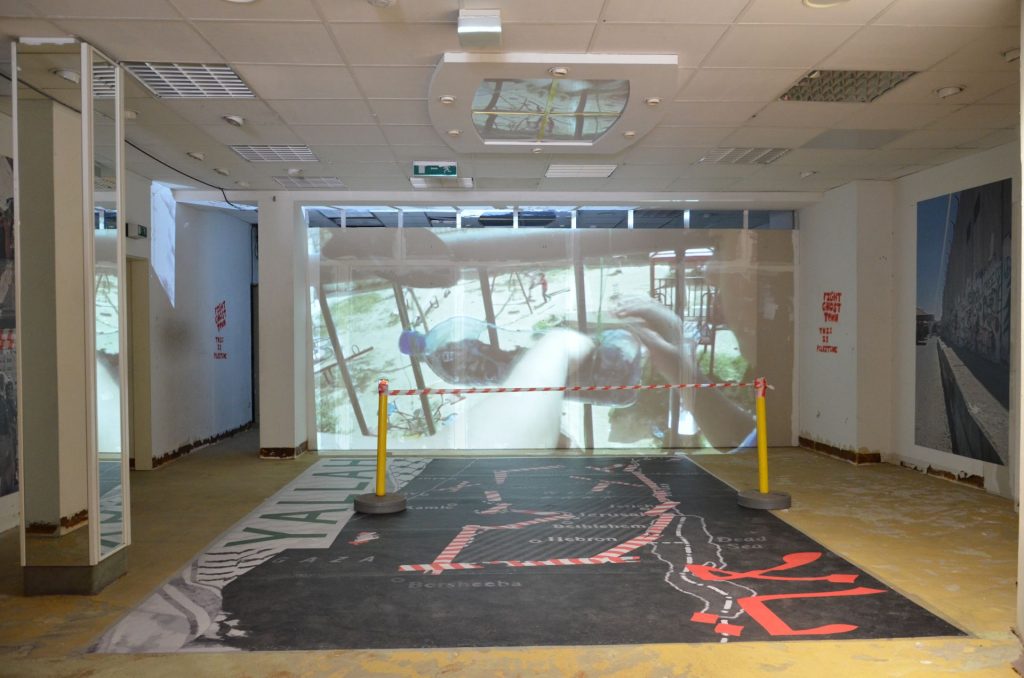YALLAH! – You All Are Hackers is a research hackathon, carried out by the University of Siegen and the University Birzeit from palestine. The project was funded by the German Academic Exchange Service (DAAD) as part of the “University Dialogue with the Islamic World” program. From 2016 to 2018, twenty university students traveled to partner countries each year to hack and learn together in cross-cultural teams around the theme of social innovation. Local problems were explored together and solutions creatively implemented. In germany the Fab Lab was used for this.
About YALLAH! Art exhibition, “Syntopy in the Making” was curated by project leaders Marios Mouratidis and Sarah Rüller with Aydin Coskun and developed in collaboration with Cologne artist Igor Sacharov-Ross and other project participants. On the one hand, the exhibition offered insight into the scientific work of the students and made it tangible and accessible on 400m². On the other hand, visitors to the exhibitions were able to step into the shoes of the project participants to recreate everyday life in Palestine. A significant part of the sculptures and installations were built at Fab Lab Siegen.

In the exhibition, on the one hand, the “ivory tower of science” was deconstructed and made accessible – the effects of the conflict and the refugee culture made tangible. Art should be understood as a method to make experiences, emotions and science comprehensible. On display were photographs, video installations, replicas of work and teaching sites, sculptures, research data such as field notes, and artifacts from field visits. The objects and photographs are not only to be viewed as self-contained – the 400 square meters of gallery space are also to be understood as one work – as a spatial collage. A virtual tour can be found here.
Description of the Collage
The entrance area of the exhibition space is bright and quite wide, large format prints of the Wall in Bethlehem show colorful grafitties and guide the visitor into the interior of the space, which becomes more and more narrow. At the narrowest point, visitors must pass a gray block – a checkpoint. To view the video installation it contains, visitors bend over in an uncomfortable, humble position – the audiovisual experience is meant to convey the feeling of people at Israeli checkpoints. The interior of the exhibition opens to a large video installation showing day trips and fond memories, but surrounded by soldiers, visitors stand here on a 15m² map of Palestine in front of a border – despite the vastness of the space, dark and hemmed in by 2m tall armed soldiers. Behind this projection, is the heart of the exhibition: the key room. Two video installations project through over 300 keys onto the walls. The keys hang from a network of threads and symbolize the Palestinian refugee paradigm.

The threads block entry into the room, some keys – the hope of returning home – lie on the floor, detached from the network. Today, these keys are family artifacts and are bequeathed from generation to generation.

The keys in the heart of the exhibition were cut quite quickly on the CO2 laser and then elaborately post-processed. Apart from dipping in in plaster, they have been sprayed with quite a few layers of texture paint. Several spray stencils and also bookmarks were also cut on the laser.






